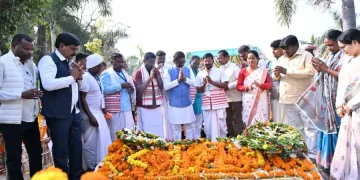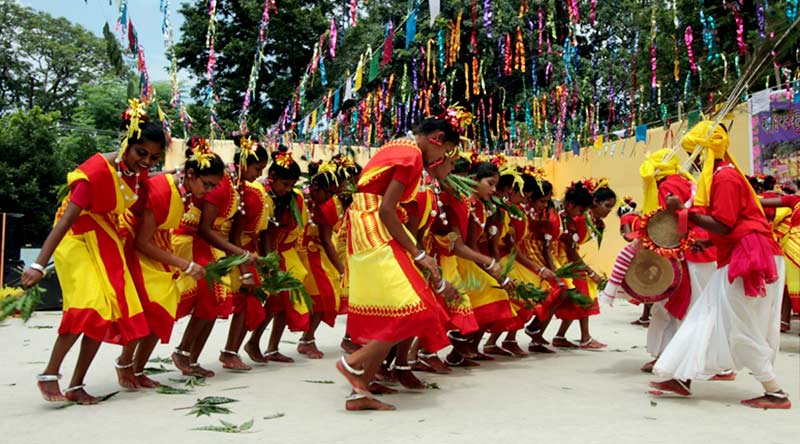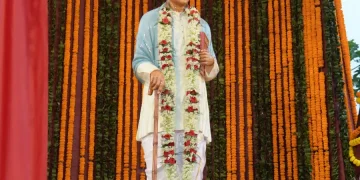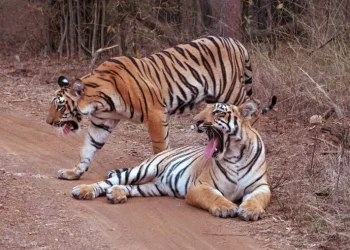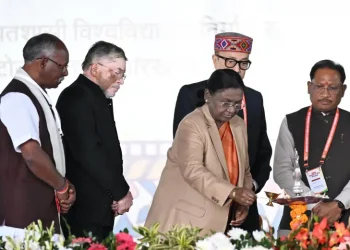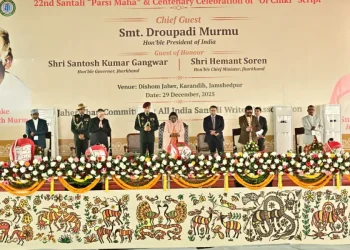Karma Puja is celebrated on the 11th day of Bhadrapad, or Bhado. It falls on September 6 this year. It is one of the most important festivals of adivasis and celebrated in Assam, Jharkhand, Chhattisgarh, Madhya Pradesh, Odisha, and West Bengal.
The festival basically symbolises honest labour, with prayers for bountiful harvests and other natural resources to bring prosperity. Sowing is almost complete by this time and people pray for the mercy of nature on the crops.
“Karma Puja is a festival of new crops. Bhelwa (Semecarpus anacardium or marking nut tree) branches are inserted in paddy fields to protect crops from insects and other harmful elements,” Dr Hari Oraon, who is coordinator of Ranchi University’s Tribal and Regional Languages Department, tells theindiantribal.com.
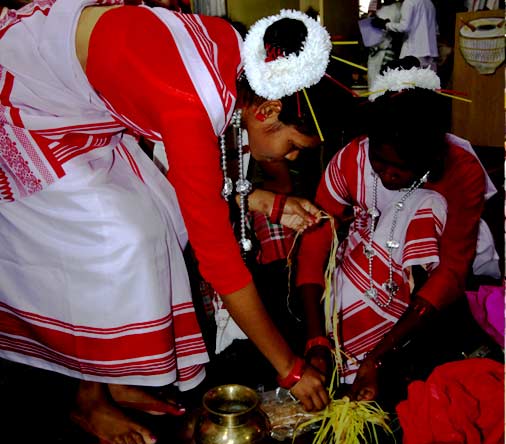
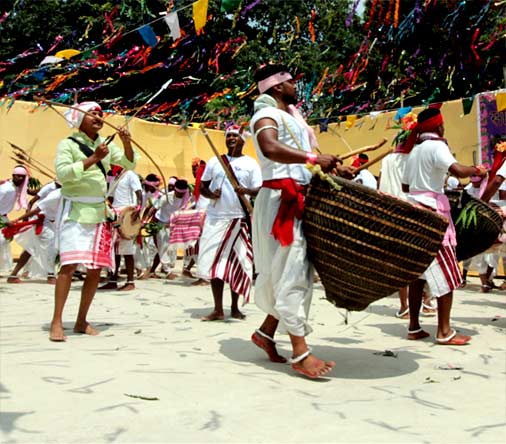
Preparations for Karma Puja take a week. Fresh sand is brought from the riverbed to the village and individual houses, and sown with seven seeds — rice, barley, maize, wheat, gram, horse gram and lentil.
Three branches of the Karma tree (Nauclea Parvifolia) are planted into the soil of courtyards or in the village akhra, the community centre.
They symbolise the Trinity — Brahma, Vishnu and Mahesh; akash, prithvi and patal (the sky, earth and the world underneath); bhut, vartaman and bhavishya (the past, present and future).
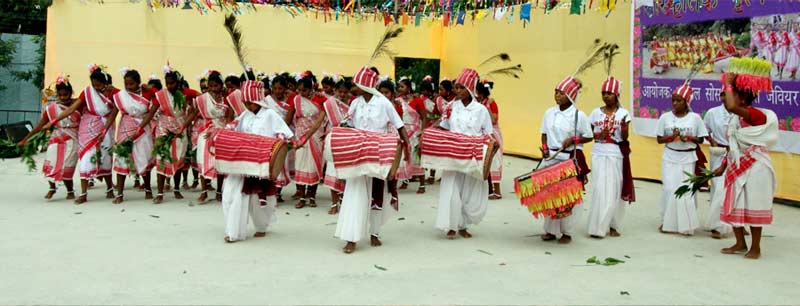
On this day, sisters seek long life and prosperity for their brothers, and worship the branches. “The sisters worship Karma Gosai (deity),” says Dr Hari Oraon, adding how Karma Puja underlines the need to protect the environment.
“It is not about worshipping the Karma tree alone. We also need to protect other trees and plants, along with the living beings dependent on the trees for survival. That relationship signifies the strong bondage between brothers and sisters.”
Marriages of girls are fixed after Karma Puja. “There is also a tradition called Sahiya, which means friendship and strengthening mutual bonds within the community,” says Dr Hari Oraon. “Friendship is maintained across generations through this Sahiya system,” he added.
Noted anthropologist Dr Karma Oraon opines that Karma Puja is also a celebration of victory. The view stems from tales of yore, when tribal groups would hide from their enemies during battles amid the thick foliage of the Karma tree.

